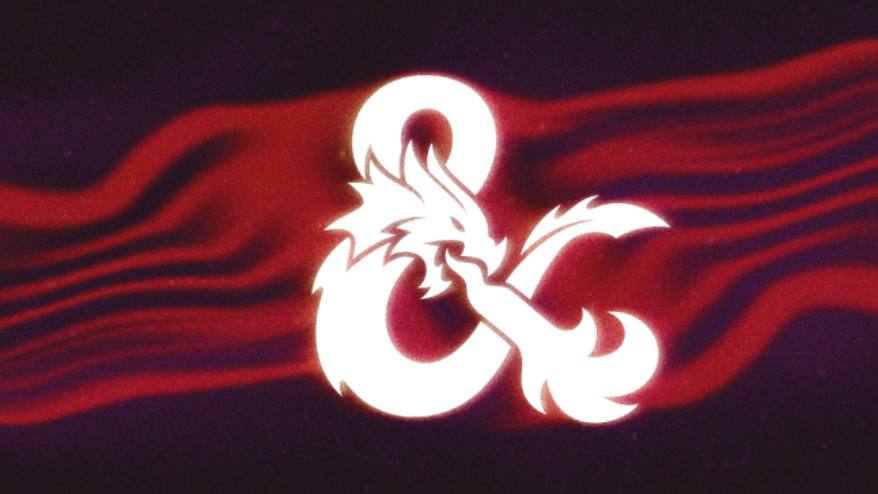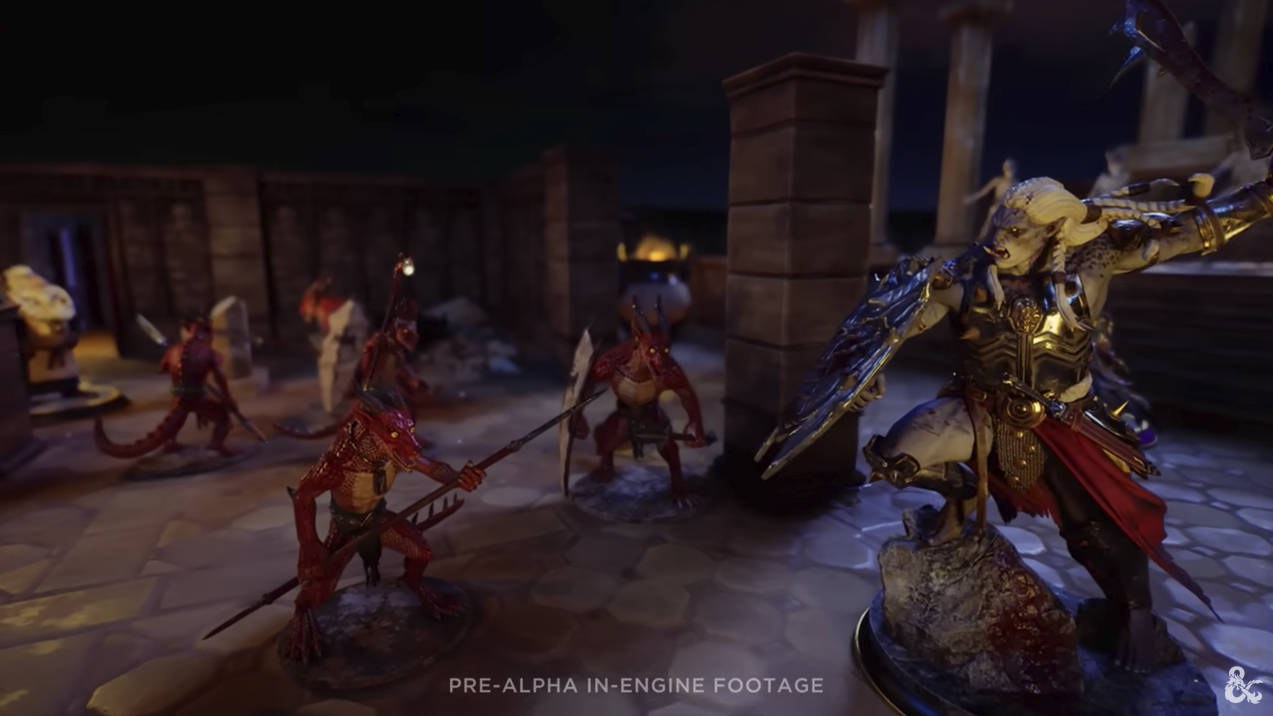Is One D&D's Digital Play Experience Too Much of a Good Thing?
When Building on Community Content, Less May Be More

One D&D is Wizard of the Coast's new initiative for Dungeons & Dragons 5th edition. It combines a design and product refresh to the game itself, tightens integration with the recently acquired D&D Beyond, and includes WotC's new entry into the virtual tabletop space: the Digital D&D Play Experience.
Virtual tabletops (VTTs) are services that allow players to play tabletop games remotely. Some, like Tabletop Simulator, Boardgame Arena, and Tabletopia ar primarily designed to support boardgames. The most growth, however, has been in VTTs for roleplaying games, primarily Dungeons & Dragons. These vary in complexity, but most allow players to manage maps, character sheets, chat, and roll dice. Jahmal "Mad Jay" Brown has a good introduction to what VTTs have to offer on his Play.Fearless blog. The VTT market has gotten crowded. Hipsters & Dragons lists eleven of the best VTTs, and The Dungeon Newb's Guide reviews twenty-one options. The list continues to grow, spurred on by both the soaring popularity of D&D and the rise in remote play due to the COVID-19 pandemic. It's no wonder that Wizards of the Coast has decided to enter the ring once again.
The Digital D&D Play Experience
It makes sense for WotC to show interest in this market. After all, it's their game that is most prominently played with these tools. There's value for them in combining everything a player might need into one place. They've positioned the Play Experience as a premium option for online play.
"We want to make sure that the experience for you is that you're experiencing a miniature set."

"We chose the Unreal Engine for several reasons. Reason number one: make it look dope."
Looking at the limited alpha footage provided and listening to their commentary, they're primary goal is to simulate as closely as possible the experience of playing with 3D scenery and miniatures at the table. Touches that support this "not a video game" feel are static character models, bases beneath the models, and the tilt-shift camera effect they highlight. Few of the competing VTTs released so far are taking the 3D model approach they propose. They promise to include access to these premium assets and scenery, with customization options and reuse in your own games.
Wizards of the Coast is not the only developer pursuing the goal of a 3D virtual tabletop experience, however. Realm Engine and TaleSpire are both VTTs in early access that have similar objectives. TaleSpire, in particular, approaches the virtual table space attempting to mimic the "miniatures on a map" feel that the D&D Play Experience is targeting (down to rolling 3D dice among the miniatures and scenery). It will be interesting to see how this corner of the VTT market matures and how well adoption is with users.
Bend Bars, Lift Gates: Barriers to Entry
The classic dungeon presents players with obstacles to overcome and puzzles to solve, but how will players respond to obstacles presented by their gaming environment?
Lars Doucet, game developer and consultant, had this to say about prospective competitors to Roblox:
Better graphics seem like a win, but could actually be a liability. An intentionally crappy aesthetic is actually a strength Roblox shares with Minecraft – not only does it make it faster and cheaper to render, it keeps young content creators from feeling self-conscious that their contributions aren't "good enough" or "real" when contrasted with everything else on the platform.
The One D&D Play Experience has a laudable goal: simulate the at-table experience with a high degree of fidelity. The (very early) preview shown in the reveal trailer emphasizes use of Unreal Engine 5 and virtual tilt-shift effects to produce the feeling of miniatures and modelled terrain at the table. This fidelity comes at the cost of complexity and effort.
The most popular VTTs in the market have something in common: a healthy marketplace for 3rd-party content and extensions. Both Roll20 and Foundry have good support from publishers, these marketplaces were populated and popularized by the community of users and small profession creators. The publishers view these are worthwhile investments because of the groundwork laid by the individual contributors that added content there first. Even if a user does not purchase from the marketplace, these platforms offer tools for users to add their own content for their personal games. A service of this type will live and die by its ability to encourage and support the contributions of its users. The broader the base of potential contributors, the better.
The complexity inherent in 3D-modelled environments is a pretty significant barrier to entry for creators. Setting up games in the more complex VTTs is already a significant hurdle for many users (one "Foundry Basics" playlists is twelve vidoes long). Combining the two into a single platform may be insurmountable for a significant segment. The combination has the potential to limit users to only those games or assets for which there is marketplace support, which, given the increased investment required, are likely to be fewer and more expensive than alternatives on other platforms. Platforms such as Roblox, Minecraft, and DotBigBang lower this barrier by reducing the fidelity of their assets, but the positioning of the digital play experience explicitly runs counter to this.
Comments on the One D&D announcement video show players are already concerned about these issues:
"The 3d digital setup means that you can't just import googled or self-created art - if you haven't bought the specific map or miniature from them, you are stuck."
"I worry that people who play "homebrew" adventures and not published ones, will find this new system very unfriendly or restrictive to their creativity. I hope it will allow for easily creating your own campaigns."
"Please don't close the 3d system out from third party content, the community is always the living heart of new systems"
Besides cost, commentor's greatest concerns are for the ability to include their own content and walled-gardens that would limit them to only WotC produced adventures and assets.
Roll to Hit: Making it Work
Can Wizards make it work? They definitely have the first-party advantage, along with integration with their newly acquired digital portal/marketplace D&D Beyond. Plus, they are no strangers to the value in community content and customization. D&D Beyond has robust support for homebrewed content which players can keep to their own games or share publicly. Wizards maintains a digital marketplace in Dungeon Masters Guild which allows anyone to create a sell content for D&D, including use of licenses assets and artwork. There's no reason not to believe that the Player Experience will include a marketplace as well, but will it be closed like D&D Beyond, or open like DMs Guild?
More from the One D&D reveal:
"Ease of use means being able to access all of the tools that you need in order to get the adventure started."
"We might give you a premade campaign from us. [...] You're going to be able to take this playset, take it apart, and build you're own."
"We're going to have a really robust tool for you to create your own dungeons."
Wizards' statements so far show that they are taking seriously the need to provide accessible tools for the platform, to allow users to produce content for their own games. Tools to customize miniatures and remix content from WotC are a positive step. Building tools for creating 3D dungeons (and hopefully other sort of scenes) is a tall order, but possible.
There's no indication, however, that the Play Experience will be open to third-party content. One challenge of positioning the service as a premium experience is the need to gatekeep third party content, which they may not have the resources to support. It does not seem likely that they can support the voracious appetite of players for more content. Introducing third party content mean also supporting it in the proposed toolchain as well as the play environment, which anyone that has had to incorporate 3D assets from multiple sources can attest too.
Possibilities exist, though. The increased accessibility of 3D printing has created a cottage industry of modellers producing printable miniatures. The static nature of the models in the Play Experience means that models can be used without the need for rigging or animation. Combined, this creates a potential for preexisting content to be migrated to the platform. Enterprising figure designers might look into importing their digital sculptures into Unreal Engine 5 in anticipation.
On the environment tooling front, software such as Dungeon Alchemist and Flowscape allow for the creation of 3D scenes with paint-like tools. There's potential there for the tool for environment creation to be made accessible and versatile, without a high degree of technical expertise required.
There is a lot of risk and a lot of potential in the Digital D&D Play Experience, and Wizards of the Coast have some time to figure this all out. I'll be watching with anticipation to see how they approach this in the months ahead.
product managementtabletopgamesd&d